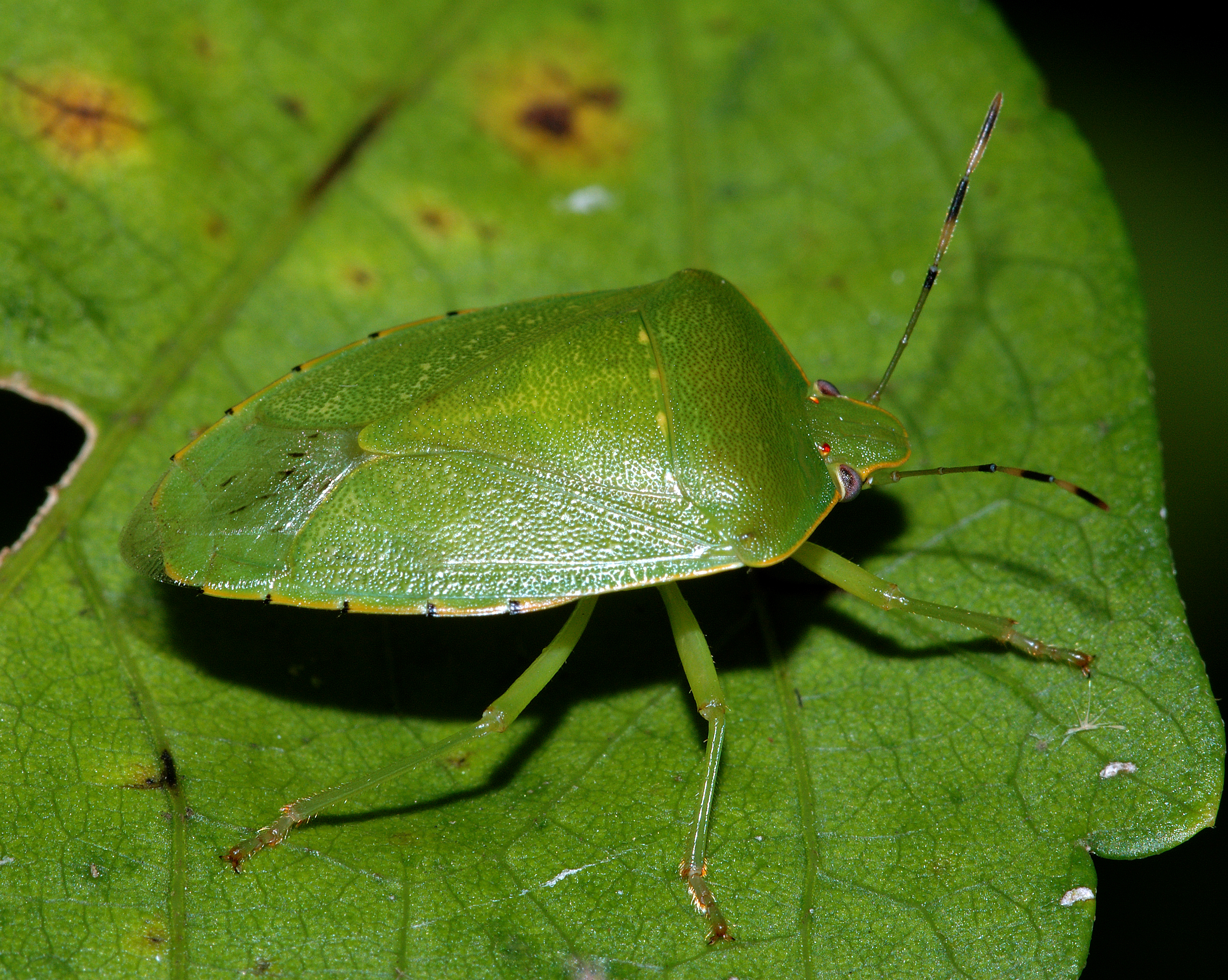
Its color is typically bright green, with narrow yellow, orange, or reddish edges. It is a large, shield-shaped bug with an elongate, oval form and a length between 13–18 mm. It can be differentiated from the species Nezara by its black outermost three antennal segments. Its anterolateral (= in front and away from the middle) pronotal margin is rather straight and not strongly arced such as in Acrosternum pennsylvanicum.
Both adults and nymphs have large stink glands on the underside of the thorax extending more than half-way to the edge of the metapleuron. They discharge large amounts of this foul-smelling liquid when disturbed.this bug is from the order Hemiptera.
When I first saw the eggs for this insect, I assumed that they were for a butterfly as they do look like that. However, when they hatched out, there were little things crawling around and they were so small that I couldn't tell whether they had six legs or eight.I liberated the hatchlings into our back garden and at regular(ish) intervals, went and found them, collecting images at each stage of their development - hopefully, I haven't left out/missed one of the stages (although there does seem to be a bit of a size gap between the 3rd and 2nd from the right, or ... well, I didn't have them in a jar on the desk so I don't know.According to Dr. David Rider of North Dakota State University the generic name is wrong. The genus name Acrosternum should be restricted to a handful of Old World, small, pale green species that live in dry arid areas. The larger, brighter green species that live in both the Old and New Worlds should actually go by the generic name Chinavia, therefore this species should be called Chinavia hilaris.It is found in orchards, gardens, woodlands and crop fields throughout North America, feeding with their needle-like mouthparts on the juices of a wide variety of plants from May until the arrival of frost. Adults develop a preference for developing seeds and thus become crop pests (tomato, bean, pea, cotton, corn, soybean, eggplant). When no seeds are present, they also feed on stems and foliage, thus damaging several fruit trees, such as the apple, cherry, orange and peach trees.Its color is typically bright green, with narrow yellow, orange, or reddish edges. It is a large, shield-shaped bug with an elongate, oval form and a length between 13–18 mm. It can be differentiated from the species Nezara by its black outermost three antennal segments. Its anterolateral (= in front and away from the middle) pronotal margin is rather straight and not strongly arced such as in Acrosternum pennsylvanicum.
